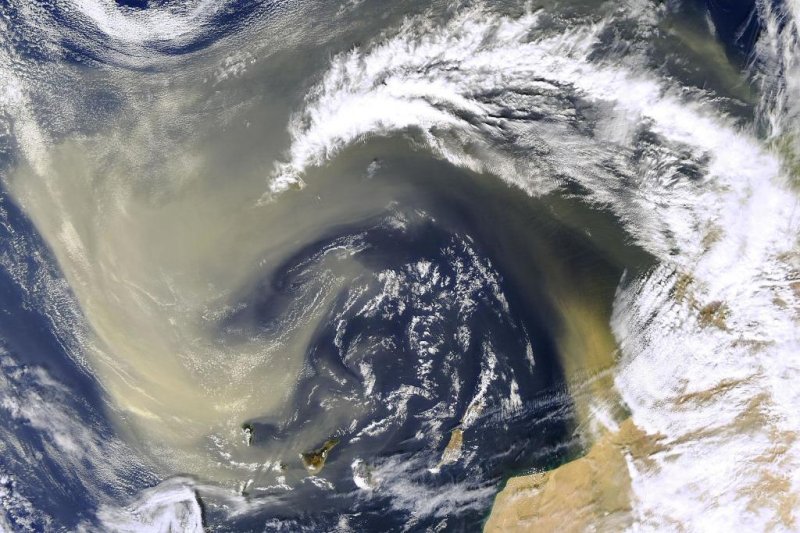Scientists found evidence that Saharan dust was being blown across to the Canary islands as early as 4.8 million years ago. Photo by NASA
Sept. 23 (UPI) -- Determining the age of the Sahara Desert has proven difficult for geologists, but new research suggests the world's largest desert is at least 4.8 million years old.
Scientists successfully dated dust from the Sahara that blew over to the Canary Islands a few million years ago.
"People have been trying to figure it out for several decades," Daniel Muhs, a geologist with the U.S. Geological Survey in Denver, said in a news release. "More recent studies said it was the beginning of the Pleistocene, about 2.6 million years ago. Then others say a few thousand years ago."
Researchers have also found evidence that the Sahara's aridity has been interrupted by periods of greening.
To better understand when the dynamic dryland first formed, scientists went in search of paleosols, layers of of ancient African dust. On the Canary Islands, located off of Africa's west coast, scientists found layers of fine reddish-brown soil sandwiched between layers of volcanic rocks and sands dunes.
In one location, scientists found the paleosols -- featuring fine-grained quartz and mica, minerals foreign to the islands -- interspersed with layers of shells of marine organisms. At another location, researchers found the African dust among layers of ancient lava.
When lava cools and solidifies, isotopic clocks in the hardened minerals begin ticking. By analyzing the ratios of isotopes inside the lava rocks, scientists can determine the age of the lava layers.
Researchers were able to date three paleosols. The oldest was deposited between 4.8 and 2.8 million years ago, and another got trapped between 3.0 to 2.9 million years ago. The third was blown across the sea around 400,000 years ago.
The findings -- shared Monday in a presentation at the Geological Society of America's annual meeting -- suggest the Sahara was dry enough to fuel large dust storms by 4.8 million years ago. Scientists previously found 4.6-million-year-old paleosols among marine sediments.
It's possible the desert is even older.
"We could take it further back in time if we can find the paleosols," Muhs said.















